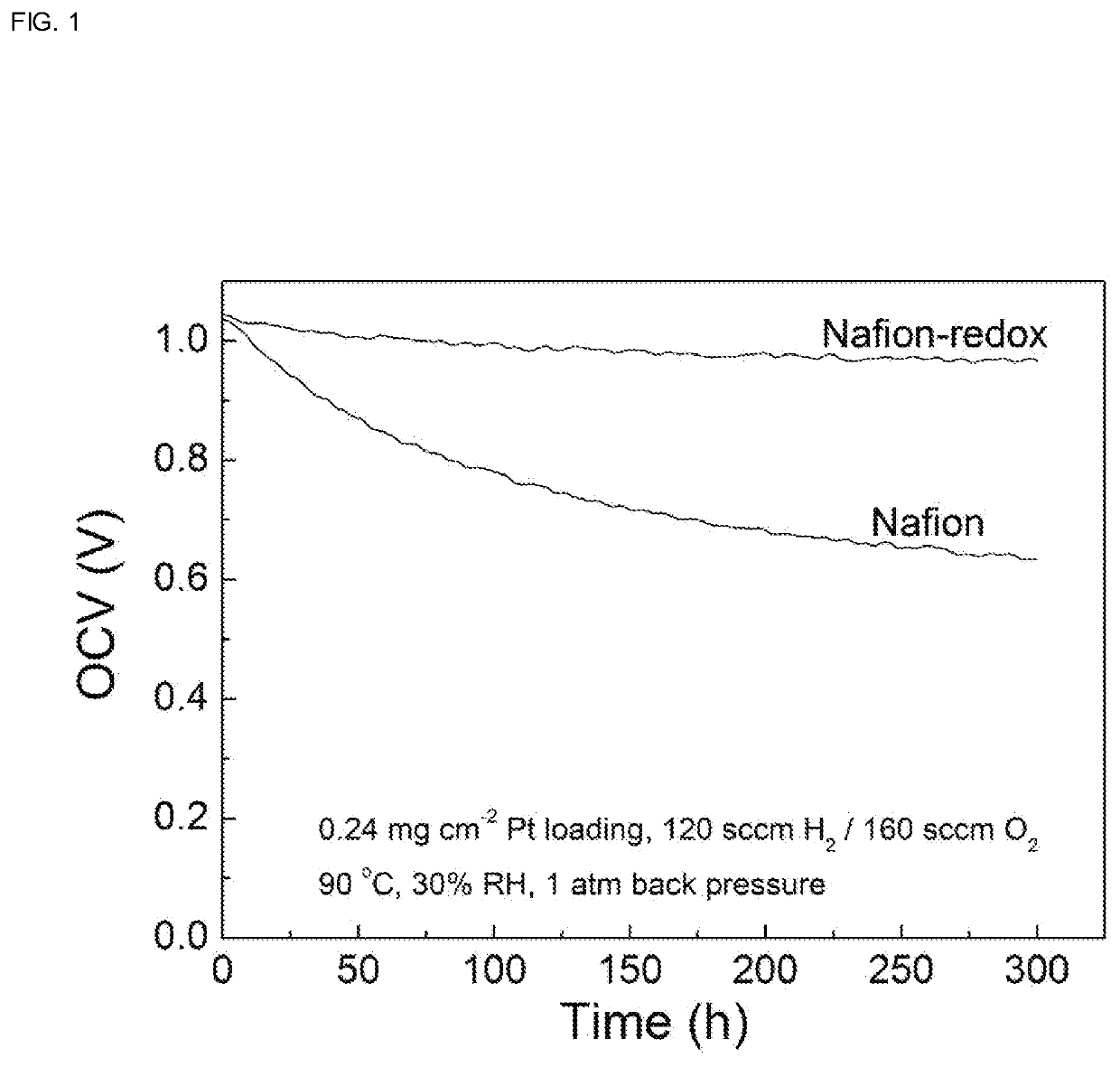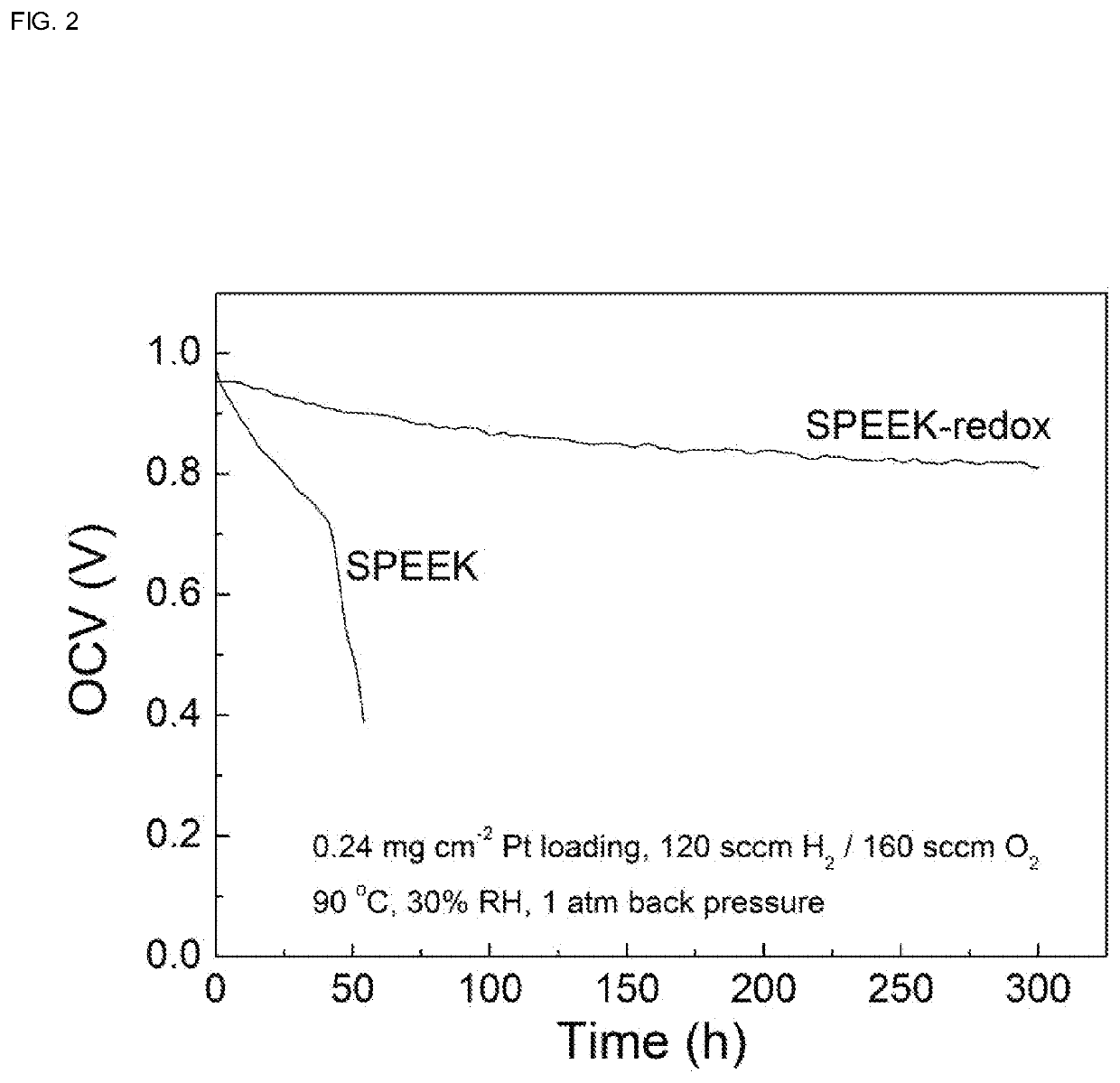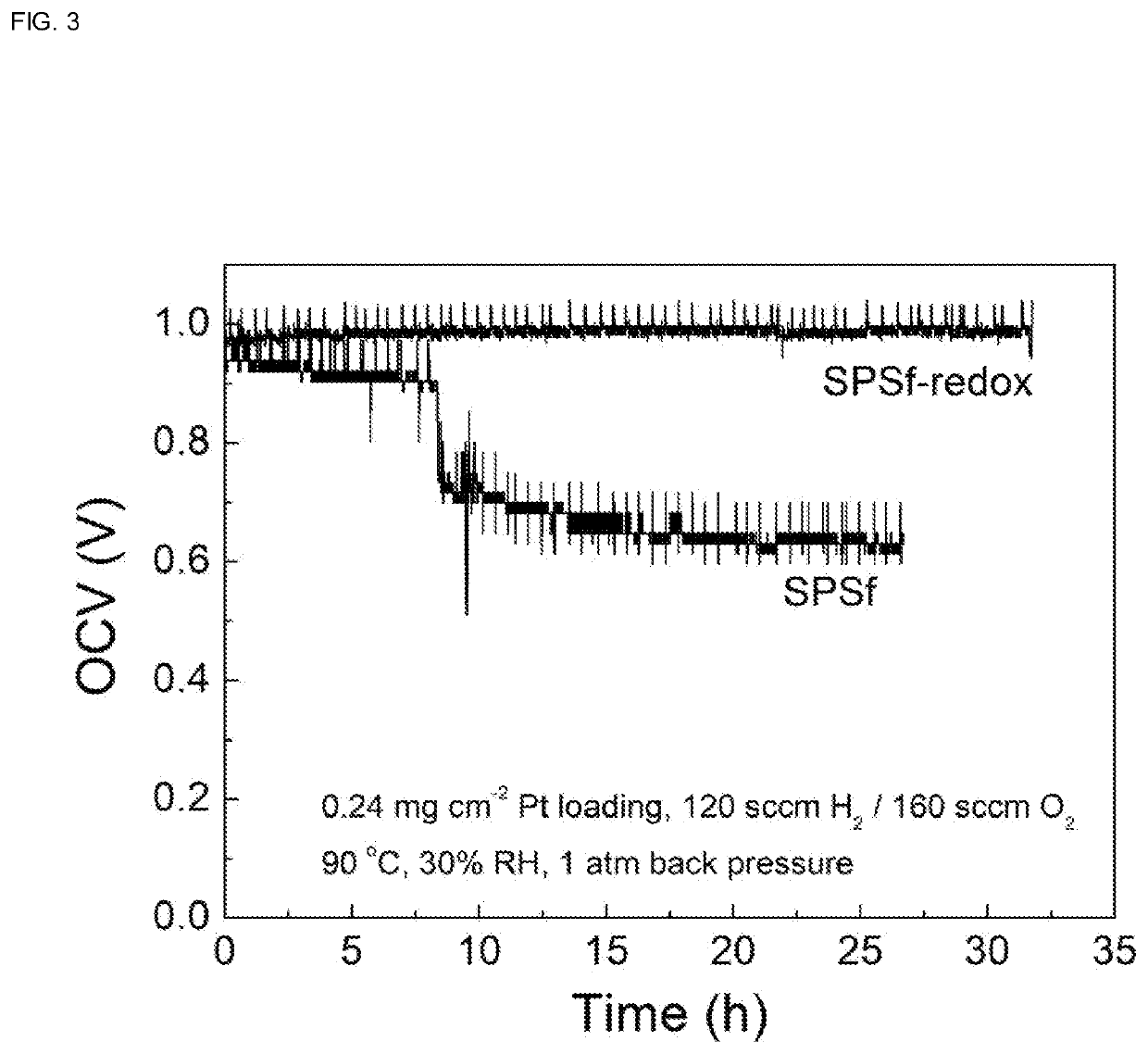Proton exchange membrane with enhanced chemical stability and method of preparing thereof
- Summary
- Abstract
- Description
- Claims
- Application Information
AI Technical Summary
Benefits of technology
Problems solved by technology
Method used
Image
Examples
embodiment 1
[0030](1) A solvent of commercial Nafion D521 dispersion is evaporated, to obtain Nafion polymer.
[0031](2) The Nafion polymer and potassium ferrocyanide are physically mixed at a mass ratio of 95:5, to obtain a membrane formulation.
[0032](3) The membrane formulation is dissolved in dimethylformamide to prepare a membrane casting solution with a total solute concentration of 100 g / L, and the solution is left to stand for defoaming.
[0033](4) The membrane casting solution is decanted into a casting dish and evaporated for 20 h at the temperature of 80° C. and 1 atm pressure (ambient conditions) to form a membrane.
[0034](5) After solvent evaporation and membrane formation process are complete, the membrane is removed from the casting dish and immersed in 1 M sulfuric acid in an ice bath environment for acidification, to obtain a proton exchange membrane with much improved chemical stability.
[0035]FIG. 1 shows the change of the open circuit voltage (OCV) value of a proton exchange membra...
embodiment 2
[0036](1) 10.0g of poly(ether ether ketone) is dissolved in 300 mL of concentrated sulfuric acid for a reaction for 60 h at room temperature. The obtained solution is poured into ice water, and a precipitate is washed with pure ice water until the pH value reaches 7.0. The recovered polymer is then dried for 12 h at room temperature, to obtain sulfonated poly(ether ether ketone) with a 70% degree of sulfonation.
[0037](2) The sulfonated poly(ether ether ketone) and potassium ferricyanide are physically mixed at a mass ratio of 90:10 to obtain a membrane formulation.
[0038](3) The membrane formulation is dissolved in dimethylacetamide to prepare a membrane casting solution with a total concentration of 50 g L−1, and the solution is left to stand for defoaming and degassing.
[0039](4) The membrane casting solution is decanted into a casting dish and evaporated for 12 h at the temperature of 120° C. under ambient 1 atm pressure conditions to form a membrane.
[0040](5) After membrane format...
embodiment 3
[0042](1) Commercial sulfonated polysulfone (SPSf) with 40% degree of sulfonation (Shandong Jinlan special polymer Co. Ltd, China) is dissolved in dimethylformamide, and the polymer solution is poured into water to precipitate purified sulfonated polysulfone.
[0043](2) The sulfonated polysulfone and sodium pentacyanoferrate are physically mixed at a mass ratio of 99:1 to obtain a membrane formulation.
[0044](3) The membrane formulation is dissolved in N-methylpyrrolidone to prepare a membrane casting solution with a total concentration of 500 g L−1, and the solution is left to stand for defoaming.
[0045](4) The membrane casting solution is decanted into a casting dish and evaporated for 48 h at a temperature of 20° C. under ambient conditions of 1 atm pressure to form a membrane.
[0046](5) After membrane formation is complete, the membrane is removed from the casting dish and immersed in 1 M sulfuric acid in an ice bath environment for acidification, to obtain a proton exchange membrane...
PUM
| Property | Measurement | Unit |
|---|---|---|
| Temperature | aaaaa | aaaaa |
| Temperature | aaaaa | aaaaa |
| Pressure | aaaaa | aaaaa |
Abstract
Description
Claims
Application Information
 Login to View More
Login to View More - R&D
- Intellectual Property
- Life Sciences
- Materials
- Tech Scout
- Unparalleled Data Quality
- Higher Quality Content
- 60% Fewer Hallucinations
Browse by: Latest US Patents, China's latest patents, Technical Efficacy Thesaurus, Application Domain, Technology Topic, Popular Technical Reports.
© 2025 PatSnap. All rights reserved.Legal|Privacy policy|Modern Slavery Act Transparency Statement|Sitemap|About US| Contact US: help@patsnap.com



